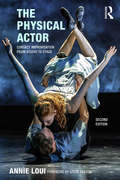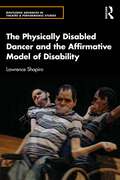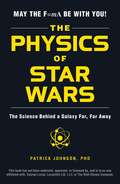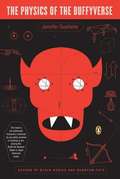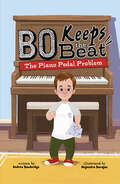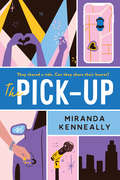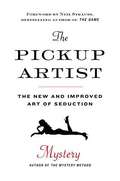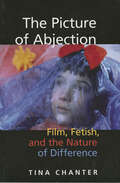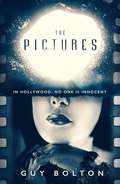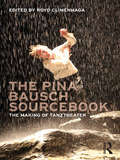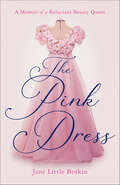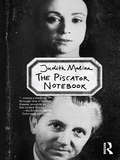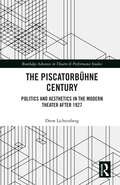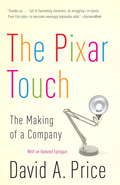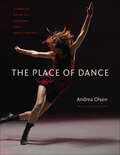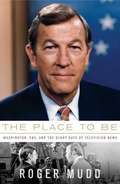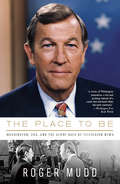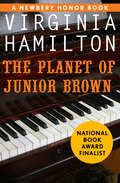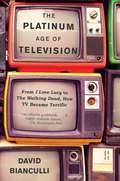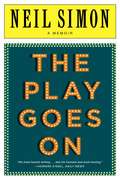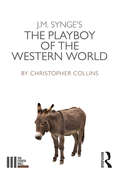- Table View
- List View
The Physical Actor: Contact Improvisation from Studio to Stage
by Annie LouiThe Physical Actor is a comprehensive book of exercises for actors. It is carefully designed for the development of a strong and flexible physical body able to move with ease through space and interact instinctively on-stage. Annie Loui draws on her training with Etienne Decroux, Carolyn Carlson, and Jerzy Grotowski to bring Contact Improvisation into the theatrical sphere. She explains how it can be used to develop alert and embodied listening skills in the actor, and how to apply it to working with texts on stage. This book will guide the reader through a full course of movement skills, including: Partnering skills Spatial awareness for groups and individuals Fine motor control through mime Heightened co-ordination and sustained motion New for this edition are additional partnering exercises, in-depth applications of contact improvisation to monologues and scenes, and a chapter on devising physical theatre performances.
The Physically Disabled Dancer and the Affirmative Model of Disability (Routledge Advances in Theatre & Performance Studies)
by Lawrence ShapiroThis volume investigates the contributions and achievements of the physically disabled dancer while challenging and recognizing the inherent inequities in the field of integrated dance in the UK which currently places greater emphasis on the learning‑disabled performer. This is the first book ever written by a physically disabled dancer on the subject of physically disabled dancers. Inherent in this examination is the model of examining disability that is most closely associated with the disability arts movement which is the ‘affirmative model of disability’. This model is defined as an approach to disability in which the disabled person is neither an object of medical care nor a victim of social indifference but a self‑respecting, autonomous individual in which their disability is a positive and affirming aspect of their self‑identity. This book, based on interviews with physically disabled dancers, choreographers, academics and arts producers all in a UK context, combines a wide range of perspective of disability dance together with the intellectual rigour of disability studies to produce a new definition of the physically disabled dancer as an affirming, positive, indispensable practitioner of contemporary performance art. The volume pioneers perspectives of the physically disabled dancer prioritizing first‑person accounts from the performers themselves to produce an unprecedented contribution to the study of disability arts from a uniquely British perspective.This book will offer educators as well as arts and cultural professionals a critical resource for facilitating work by and in alliance with practitioners of integrated dance.
The Physics of Star Wars: The Science Behind a Galaxy Far, Far Away
by Patrick JohnsonExplore the physics behind the world of Star Wars, with engaging topics and accessible information that shows how we’re closer than ever before to creating technology from the galaxy far, far away—perfect for every Star Wars fan! Ever wish you could have your very own lightsaber like Luke Skywalker and Obi-Wan Kenobi? Or that you could fly through space at the speed of light like Han Solo and Poe Dameron? Well, those ideas aren’t as outlandish as you think. In The Physics of Star Wars, you’ll explore the mystical power of the Force using quantum mechanics, find out how much energy it would take for the Death Star or Starkiller Base to destroy a planet, and discover how we can potentially create our very own lightsabers. The fantastical world of Star Wars may become a reality!
The Physics of the Buffyverse
by Jennifer OuellettePhysics with a Buffy the Vampire Slayer pop-culture chaser In the tradition of the bestselling The Physics of Star Trek, acclaimed science writer Jennifer Ouellette explains fundamental concepts in the physical sciences through examples culled from the hit TV shows Buffy the Vampire Slayer and its spin-off, Angel. The weird and wonderful world of the Buffyverse-where the melding of magic and science is an everyday occurrence-provides a fantastical jumping-off point for looking at complex theories of biology, chemistry, and theoretical physics. From surreal vampires, demons, and interdimensional portals to energy conservation, black holes, and string theory, The Physics of the Buffyverse is serious (and palatable) science for the rest of us. .
The Piano Pedal Problem (Bo Keeps the Beat)
by Andrew BambridgeBo really wants to take piano lessons like his older brother Jason. But there are two problems—his mom says he’s not ready, and his feet can’t reach the foot pedals because of his achondroplasia. But Bo knows that where there’s a problem, there’s a solution! With determination and the help of a kind teacher, Bo tackles the piano problem, and his feet and fingers finally feel the music! Musician, educator, and actor Andrew Bambridge (Pixels) offers a charming chapter book series about a boy named Bo who, like Andrew, has achondroplasia and has always loved music.
The Pick-Up
by Miranda KenneallyMeeting a gorgeous guy in a rideshare headed to Lollapalooza is not how Mari expected her Chicago summer to start. She doesn't believe in dating...but TJ may just change her mind. Can an electric, weekend romance turn into more than just a summer fling?When Mari hails a Ryde to a music festival, the last thing she expects is for the car to pick up a gorgeous guy along the way. Mari doesn't believe in dating—it can only end with a broken heart. Besides, she's only staying at her dad's house in Chicago for the weekend. How close can you get to a guy in three days?TJ wants to study art in college, but his family's expectations cast a long shadow over his dreams. When he meets Mari in the back of a rideshare, he feels alive for the first time in a long time.Mari and TJ enter the festival together and share an electric moment but get separated in a crowd with seemingly no way to find each other. When fate reunites them (with a little help from a viral hashtag), they'll have to decide: was it love at first sight, or the start of nothing more than a weekend fling?
The Pickup Artist: The New and Improved Art of Seduction
by Mystery Chris OdomThe world's greatest pickup artist is back! After the bestselling expose The Game pulled back the curtain on Mystery and his culture of professional pickup artists, he became an international phenomenon. Unfortunately, while it's no secret that Mystery's ideas are wildly effective, women have started to catch on. They've seen the show and heard the routines-so now it's time for the next level of game! With techniques honed over fifteen years of trial, error, and ultimate triumph, and following his hit VH1 reality series, the celebrated sensei is back with his latest living-large exploits and a new and improved playbook for the twenty-first-century playboy. As the book begins, Mystery and his crew have withdrawn to their swank Miami mansion to plot their next move. When a new student comes to stay at the house, Mystery draws him deep into the pickup-artist lifestyle and shows him an intimate portrait of the master of seduction. Mystery lays out a complete system of game, and unveils his latest (and fully field-tested) strategies and techniques. The Pickup Artist includes * a list of all the triggers that create-and destroy-attraction * a new way to approach strangers and start a conversation: microcalibrated openers * Mystery's most powerful humor technique, the Absurd-so you'll never run out of things to say again * a full chapter on physical escalation (touching, kissing, "making a move") * the solution to inner-game issues, for when you're not confident enough * and much, much more. Whether he's holding court with eager disciples in South Beach, hanging out with his crew of fellow super-seducers in Las Vegas, or partying it up in the Hollywood Hills, Mystery is never far from where the action is-and never fails to get a piece of it. Now it's your turn. Read The Pickup Artist and get into the game.
The Picture of Abjection: Film, Fetish, and the Nature of Difference
by Tina Chanter“A timely and important project that changes our understanding of the role of abjection both in cultural politics and in the structure of film.” —Ewa Ziarek, State University of New York at BuffaloTina Chanter resolves a fundamental problem in film theory by negotiating a middle path between “gaze theory” approaches to film and spectator studies or cultural theory approaches that emphasize the position of the viewer and thereby take account of race, class, gender, and sexuality. Chanter argues that abjection is the unthought ground of fetishistic theories. If the feminine has been the privileged excluded other of psychoanalytic theory, fueled by the myth of castration and the logic of disavowal, when fetishism is taken up by race theory, or cultural theory, the multiple and fluid registers of abjection are obscured. By mobilizing a theory of abjection, the book shows how the appeal to phallic, fetishistic theories continues to reify the hegemonic categories of race, class, sexuality, and gender, as if they stood as self-evident categories.“An intriguing read, especially for those who favor psychological models of criticism in film theory . . . Recommended.” —Choice
The Pictures (Detective Craine Ser. #1)
by Guy Bolton*Shortlisted for the John Creasey (New Blood) Dagger Award 2017* World-weary Jonathan Craine is a detective at the LAPD who has spent his entire career as a studio &‘fixer&’, covering up crimes of the studio players to protect the billion-dollar industry that built Los Angeles. When one of the producers of The Wizard of Oz is found dead under suspicious circumstances, Craine must make sure the incident passes without scandal and that the deceased&’s widow, the beautiful starlet Gale Goodwin, comes through the ordeal with her reputation unscathed. But against his better instincts, Craine finds himself increasingly drawn to Gale. And when a series of unsavoury truths begin to surface, Craine finds himself at the centre of a conspiracy involving a Chicago crime syndicate, a prostitution racket and a set of stolen pictures that could hold the key to unravelling the mystery.
The Pina Bausch Sourcebook: The Making of Tanztheater
by Royd ClimenhagaPina Bausch’s work has had tremendous impact across the spectrum of late twentieth-century performance practice, helping to redefine the possibilities of what both dance and theater can be. This edited collection presents a compendium of source material and contextual essays that examine Pina Bausch's history, practice and legacy, and the development of Tanztheater as a new form, with sections including: Dance and theatre roots and connections; Bausch’s developmental process; The creation of Tanztheater; Bausch’s reception; Critical perspectives. Interviews, reviews and major essays chart the evolution of Bausch’s pioneering approach and explore this evocative new mode of performance. Edited by noted Bausch scholar, Royd Climenhaga, The Pina Bausch Sourcebook aims to open up Bausch’s performative world for students, scholars, dance and theatre artists and audiences everywhere.
The Pinata
by Rita Rosa Ruesga Soledad SebastianScholastic and Latin Grammy nominee Rita Rosa Ruega have rejoined to bring a new book of songs from the Hispanic tradition for all ages. Scholastic and Latin Grammy nominee Rita Rosa Ruega have rejoined to bring a new book of songs from the Hispanic tradition for all ages. Among the fourteen new songs are "Antón Pirulero," "Las mañanitas," and "A la rueda rueda". Full of beautiful illustrations and a brief description of the origin of each song, La piñata / The Piñata also include a link from where the songs--sung by the author--can be downloaded, as well as their music notation and guitar chords. Scholastic y Rita Rosa Ruesga, nominada al Grammy Latino, reanudan su colaboración con un nuevo libro de canciones hispanoamericanas para grandes y chicos que presenta catorce nuevas canciones de la tradición popular, entre ellas "Antón Pirulero", "La piñata" y "A la rueda rueda". Además de las hermosas ilustraciones y un enlace donde podrán bajar las canciones interpretadas por la autora, el libro también incluye partituras, acordes para guitarra y una breve explicación de la procedencia de cada canción.
The Ping-Pong Queen of Chinatown
by Andrew YangPerfect for fans of Ben Philippe and Mary H. K. Choi, this charming, insightful YA novel follows two high school students who form a complicated, ground-shifting bond while filming a movie.High school junior Felix Ma wants to prove to his parents that he’s not a quitter. After crashing out of piano lessons and competitive ping-pong, Felix starts a film club at his school in a last-ditch attempt to find a star extracurricular for his college applications.Then he meets Cassie Chow, a bubbly high school senior who shares Felix’s anxieties about the future and complicated relationship with parental expectations. Felix feels drawn to Cassie for reasons he can’t quite articulate, so as an excuse to see her more, he invites Cassie to star in his short film.The project starts out as a lighthearted mockumentary. But at the urging of Felix’s college admissions coach, who wants to turn the film into essay material, it soon morphs into a serious drama about the emotional scars that parents leave on their kids. As Felix and Cassie uncover their most painful memories, Cassie starts to balk at opening her wounds for the camera.With his parents and college admissions coach hot on his heels, Felix discovers painful truths about himself and his past—and must decide whether pleasing his parents is worth losing his closest friend.
The Pink Dress: A Memoir of a Reluctant Beauty Queen
by Jane Little BotkinFor fans of Little Miss Sunshine and Secrets of Miss America, this memoir from a national award-winning author reveals the reality of being the first Guyrex Girl in the 1970s. Beauty pageant stories have never been this raw, this real.Growing up in West Texas, Jane Little Botkin didn’t have designs on becoming a beauty queen. But not long after joining a pageant on a whim in college, she became the first protégé of El Paso’s Richard Guy and Rex Holt, known as the “Kings of Beauty”—just as the 1970’s counterculture movement began to take off. A pink, rose-covered gown—a Guyrex creation—symbolizes the fairy tale life that young women in Jane’s time imagined beauty queens had. Its near destruction exposes reality: the author’s failed relationship with her mother, and her parents’ failed relationship with one another. Weaving these narrative threads together is the Wild West notion that anything is possible, especially do-overs. The Pink Dress awakens nostalgia for the 1960s and 1970s, the era’s conflicts and growth pains. A common expectation that women went to college to get “MRS” degrees—to find a husband and become a stay-at-home wife and mother—often prevailed. How does one swim upstream against this notion among feminist voices that protest “If You Want Meat, Go to a Butcher!” at beauty pageants, two flamboyant showmen, and a developing awareness of self? Torn between women’s traditional roles and what women could be, Guyrex Girls evolved, as did the author.
The Pinter Ethic: The Erotic Aesthetic (Studies in Modern Drama #Vol. 2237)
by Penelope PrenticeFirst published in 2000. Routledge is an imprint of Taylor & Francis, an informa company.
The Piscator Notebook
by Judith Malina'Theater legend Malina has written one of the most interesting studies of the avant-garde theatrical movement published in the last several years.' – CHOICE Judith Malina and The Living Theatre have been icons of political theatre for over six decades. What few realise is that she originally studied under one of the giants of twentieth century culture, Erwin Piscator, in his Dramatic Workshop at The New School in New York. Piscator founded the Workshop after emigrating to New York, having collaborated with Brecht to create "epic theatre" in Germany. The Piscator Notebook documents Malina’s intensive and idiosyncratic training at Piscator’s school. Part diary, part theatrical treatise, this unique and inspiring volume combines: complete transcriptions of Malina’s diaries from her time as a student at the Dramatic Workshop, as well as reproductions of various of Piscator’s syllabi and teaching materials; notes on Malina’s teachers, fellow students – including Marlon Brando and Tennessee Williams – and New School productions; studies of Piscator’s process and influence, along with a new essay on the relationship between his teaching, Malina’s work with the Living Theatre and "The Ongoing Epic"; an introduction by performance pioneer, Richard Schechner. The Piscator Notebook is a compelling record of the genealogy of political theatre practice in the early 20th Century, from Europe to the US. But it is also a stunningly personal reflection on the pleasures and challenges of learning about theatre, charged with essential insights for the student and teacher, actor and director. 'Piscator is the greatest theatre man of our time.' – Bertolt Brecht
The Piscatorbühne Century: Politics and Aesthetics in the Modern Theater After 1927 (Routledge Advances in Theatre & Performance Studies)
by Drew LichtenbergThis study of the Piscatorbühne season of 1927–1928 uncovers a vital, previously neglected current of radical experiment in modern theater, a ghost in the machine of contemporary performance practices. A handful of theater seasons changed the course of 20th- and 21st-century theatre. But only the Piscatorbühne of 1927–1928 went bankrupt in less than a year. This exploration tells the story of that collapse, how it predicted the wider collapse of the late Weimar Republic, and how it relates to our own era of political polarization and economic instability. As a wider examination of Piscator’s contributions to dramaturgical and aesthetic form, The Piscatorbühne Century makes a powerful and timely case for the renewed significance of the broader epic theater tradition. Drawing on a rich archive of interwar materials, Drew Lichtenberg reconstructs this germinal nexus of theory and praxis for the modern theatre. This book will be of great interest to students and scholars in theatre, performance, art, and literature.
The Pixar Touch: The Making of a Company
by David A. PriceThe Pixar Touch is a lively chronicle of Pixar Animation Studios' history and evolution, and the "fraternity of geeks" who shaped it. With the help of animating genius John Lasseter and visionary businessman Steve Jobs, Pixar has become the gold standard of animated filmmaking, beginning with a short special effects shot made at Lucasfilm in 1982 all the way up through the landmark films Toy Story, Finding Nemo, Wall-E,and others. David A. Price goes behind the scenes of the corporate feuds between Lasseter and his former champion, Jeffrey Katzenberg, as well as between Jobs and Michael Eisner. And finally he explores Pixar's complex relationship with the Walt Disney Company as it transformed itself into the $7.4 billion jewel in the Disney crown.
The Place of Dance: A Somatic Guide to Dancing and Dance Making
by Andrea Olsen Caryn McHoseThe Place of Dance is written for the general reader as well as for dancers. It reminds us that dancing is our nature, available to all as well as refined for the stage. Andrea Olsen is an internationally known choreographer and educator who combines the science of body with creative practice. This workbook integrates experiential anatomy with the process of moving and dancing, with a particular focus on the creative journey involved in choreographing, improvising, and performing for the stage. Each of the chapters, or "days," introduces a particular theme and features a dance photograph, information on the topic, movement and writing investigations, personal anecdotes, and studio notes from professional artists and educators for further insight. The third in a trilogy of works about the body, including Bodystories: A Guide to Experiential Anatomy and Body and Earth: An Experiential Guide, The Place of Dance will help each reader understand his/her dancing body through somatic work, create a dance, and have a full journal clarifying aesthetic views on his or her practice. It is well suited for anyone interested in engaging embodied intelligence and living more consciously.Publication of this book is funded by the Beatrice Fox Auerbach Foundation Fund at the Hartford Foundation for Public Giving.
The Place to Be: Washington, CBS, and the Glory Days of Television News
by Roger MuddFamed journalist and broadcast anchor Roger Mudd recounts his days with CBS and how that news bureau operated during its heady days as a global information leader. From the congressional debate during the passing of the 1964 Civil Rights Act to Mudd's departure from CBS in 1980, he offers an insider's glimpse into the political events of the last half of the twentieth century with an informative, episodic narrative structure. Mudd offers equal doses of humor and meaning with each story of this memoir, which should appeal to anyone who has followed his career through the decades. Annotation ©2008 Book News, Inc., Portland, OR (booknews.com)
The Place to Be: Washington, CBS, and the Glory Days of Television News
by Roger MuddRoger Mudd joined CBS in 1961, and as the congressional correspondent, became a star covering the historic Senate filibuster debate over the 1964 Civil Right Act. Mudd was one of half a dozen major figures in the stable of CBS News broadcasters at time when the networkOCOs standing as a provider of news was at its peak. In "The Place to Be," Mudd tells of how the bureau worked: the rivalries, the egos, the pride, the competition, the ambitions and the gathering frustrations of conveying the world to a national television audience in thirty minutes minus commercials. It is the story of a unique TV news bureau, unmatched in its quality, dedication, and professionalism, that will highlight what TV journalism was once like and what itOCOs missing today.
The Plague Lords of Ruel (Lone Wolf Gamebook #13)
by Joe DeverYou are Grand Master Lone Wolf, last of the Kai Lords of Sommerlund and sole survivor of a massacre that wiped out the First Order of your elite warrior caste. It is the year MS 5075 and twenty-five years have passed since your brave kinsmen perished at the hands of the Darklords of Helgedad. These champions of evil, who were sent forth by Naar, the King of the Darkness, to destroy the fertile world of Magnamund, have themselves since been destroyed. You vowed to avenge the murder of the Kai and you kept your pledge, for it was you who brought about their downfall when alone you infiltrated their foul domain--the Darklands--and caused the destruction of their leader, Archlord Gnaag, and the core of their cancerous power that was the infernal city of Helgedad.
The Planet of Junior Brown: Zeely / The House Of Dies Drear / The Planet Of Junior Brown / M. C. Higgins, The Great / Sweet Whispers, Brother Rush
by Virginia HamiltonJunior Brown is a musical prodigy losing touch with reality and everyone around him—except for one important friend Junior Brown is different than the other kids in his eighth-grade class. For one, he weighs three hundred pounds. He&’s also a talented musician with a serious future as a professional pianist—if he survives middle school. With an overbearing mom, disappointed teachers, and fellow students who tease him mercilessly, Junior starts to slip away into his own mind. His last hope may be his only friend, Buddy Clark, a boy in his class without a home or family who has already learned some of life&’s toughest lessons.
The Platinum Age of Television: From I Love Lucy to The Walking Dead, How TV Became Terrific
by David BianculliTelevision shows have now eclipsed films as the premier form of visual narrative art of our time. This new book by one of our finest critics explains--historically, in depth, and with interviews with the celebrated creators themselves--how the art of must-see/binge-watch television evolved. Darwin had his theory of evolution, and David Bianculli has his. Bianculli's theory has to do with the concept of quality television: what it is and, crucially, how it got that way. In tracing the evolutionary history of our progress toward a Platinum Age of Television--our age, the era of The Sopranos and Breaking Bad and Mad Men and The Wire and Homeland and Girls--he focuses on the development of the classic TV genres, among them the sitcom, the crime show, the miniseries, the soap opera, the western, the animated series and the late night talk show. In each genre, he selects five key examples of the form, tracing its continuities and its dramatic departures and drawing on exclusive and in-depth interviews with many of the most famed auteurs in television history.Television has triumphantly come of age artistically; David Bianculli's book is the first to date to examine, in depth and in detail and with a keen critical and historical sense, how this inspiring development came about.
The Play Goes On: A Memoir
by Neil SimonIn his critically acclaimed Rewrites, Neil Simon talked about his beginnings -- his early years of working in television, his first real love, his first play, his first brush with failure, and, most moving of all, his first great loss. Simon's same willingness to open his heart to the reader permeates The Play Goes On. This second act takes the reader from the mid-1970s to the present, a period in which Simon wrote some of his most popular and critically acclaimed plays, including the Brighton Beach trilogy and Lost in Yonkers, for which he won the Pulitzer Prize. Simon experienced enormous professional success during this time, but in his personal life he struggled to find that same sense of happiness and satisfaction. After the death of his first wife, he and his two young daughters left New York for Hollywood. There he remarried, and when that foundered he remarried again. Told with his characteristic humor and unflinching sense of irony, The Play Goes On is rich with stories of how Simon's art came to imitate his life. Simon's forty-plus plays make up a body of work that is a long-running memoir in its own right, yet here, in a deeper and more personal book than his first volume, Simon offers a revealing look at an artist in crisis but still able and willing to laugh at himself.
The Playboy of the Western World (The Fourth Wall)
by Christopher Collins‘I’m thinking this night wasn’t I a foolish fellow not to kill my father in years gone by.’ – Christy Mahon On the first night of J. M. Synge’s The Playboy of the Western World (1907) the audience began protesting in the theatre; by the third night the protests had spilled onto the streets of Dublin. How did one play provoke this? Christopher Collins addresses The Playboy ’s satirical treatment of illusion and realism in light of Ireland’s struggle for independence, as well as Synge’s struggle for artistic expression. By exploring Synge’s unpublished diaries, drafts and notebooks, he seeks to understand how and why the play came to be. This volume invites the reader behind the scenes of this inflammatory play and its first performances, to understand how and why Synge risked everything in the name of art.
